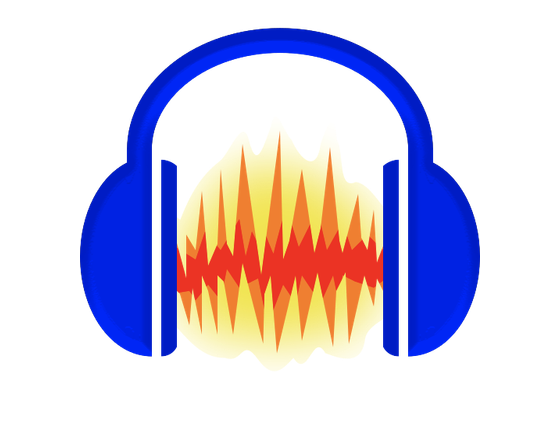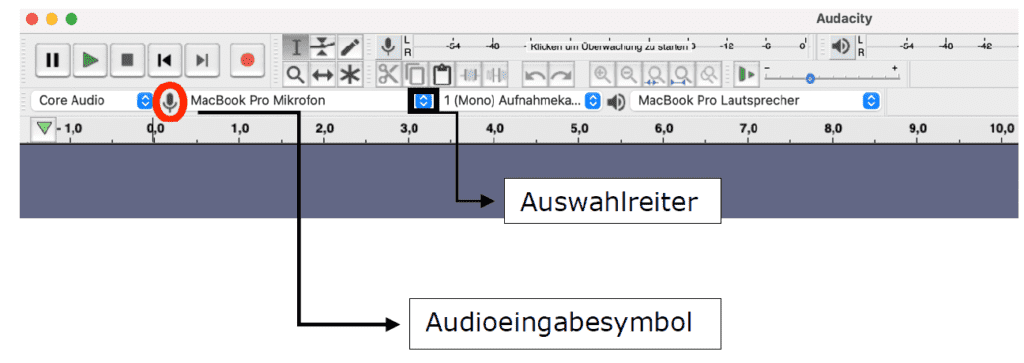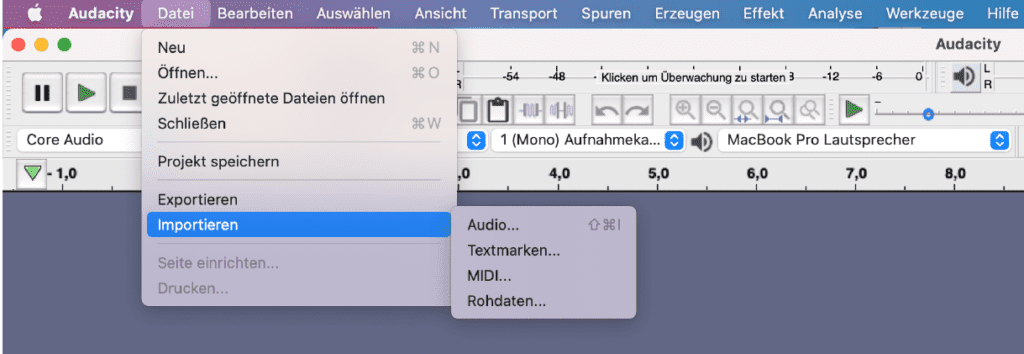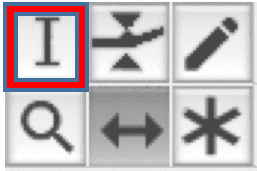Audacity
Podcasts (digital audio files) are becoming increasingly popular, and they can also be integrated effectively into teaching. Their narrative elements convey knowledge in a memorable and varied way. In addition, students have the opportunity to learn at their own pace by fast-forwarding and rewinding sequences.

In a nutshell: What is Audacity?

FACTS
Link: https://www.audacityteam.org
Licence: open source software
TECHNICAL REQUIREMENTS
– Internet connection for one-time download, no internet connection required when in use
– Notebook or tablet
Audacity is an open source audio editing program that allows you to create (record) a podcast. In Audacity you can edit your audio recordings in many ways. For example, you can cut out unwanted passages, change the volume, and add music and sounds to your recording.
Data Protection & Accessibility
Since the acquisition of Audacity by Muse Group in 2021, there has been criticism of the newly introduced data protection regulations. You can read more about this in this article (German). Caution is therefore advised when using the latest version of Audacity. Notes on accessibility and Audacity can be found here.
Range of Features
- Record from various internal and external sound sources directly to hard disk
- Edit audio recordings (cut, copy, paste, delete, move, split, fade in/out, adjust volume, pitch control, etc.)
- Supports import and export of common audio formats (MP3, WAV, MIDI, AIFF oder OGG)
Uses
- Lecture
- Seminar
- Group work
- Exams
- Consultation hours
Step by Step
You can download Audacity here free of charge (includes installation instructions).
Audacity does not require any special setup, it can be used immediately once it is installed on your computer.
Audio recording with Audacity
Record live audio in Audacity or import existing audio files into the program.
For good audio quality when recording with Audacity, connect an external microphone to your PC or use your device’s the built-in microphone. The microphone should now be listed next to the audio input icon in the Device Toolbar (see screenshot audio input in Audacity). If this is not the case, click on the Audio Setup or use Device Preferences to select the microphone.
To start the recording, click on the red Record button or use the shortcut combination CTRL+R (or press R on a Mac). To stop the recording, click on the square Stop button.

Importing an audio file
If you want to import an existing audio file, click File and select Import Audio. The main formats Audacity plays are MP3, WAV, MIDI, AIFF or OGG. Audio files in other formats must first be converted.

Editing an audio file
Quite often the raw version of an audio recording needs some editing; e.g., a slip of the tongue needs to be cut out, or the recording as a whole needs to be shortened. Audacity provides a range of editing commands and tools for this.
The most important ones are briefly described here (for more detailed instructions, use the Audacity Manual or the Audacity Wiki):
Selection Tool

You can select regions with the Selection Tool. The selected region then appears with a light blue background. From Edit Menu you can Delete, Copy, Cut, or Duplicate the selected region, or use a keyboard shortcut for the desired command. You can find an overview of the keyboard shortcuts available in Audacity here.
If you have accidentally deleted something, you can undo your action by clicking on the left arrow key in the Toolbar (see screenshot Undo key in Audacity) or by using the shortcut CTRL/CMD Z.

When you have finished editing your podcast/audio file, go to File → Export. Now you can choose the export format (e.g., MP3) and save the finished podcast on your computer. You can then upload it to teaching platforms such as ILIAS or use it elsewhere in your teaching.
If you wish to continue editing your project at a later stage, click File → Save Project and choose a storage location. Now you can return to your Audacity project at a later time.
Useful Tips
Have a concept in mind before beginning your audio recording. Be conscious of the intended learning outcomes.
When recording yourself, don’t speak too quickly and make sure there are pauses between your sentences.
Any questions?
Feel free to contact us by mail to lehrpfade@th-koeln.de!



